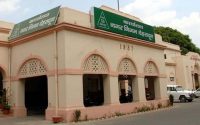Govts can’t only blame climate change for floods | Opinion
source: hindustantimes.com
When the first of this monsoon’s waterlogging occurred in Mumbai in early July, Mumbai municipal commissioner Pravinsinh Pardeshi blamed climate change for the crisis. “The city’s infrastructure is not capable of handling climate change and change in rainfall pattern,” he told this newspaper on July 5.
Indeed, in a matter of just eight days, from 8.30 am on July 1 to 8.30 pm on July 8, Mumbai recorded 708 mm rainfall, which amounted to 84% of its monthly average of 840.7 mm for that month.
In Sangli, on August 10, chief minister Devendra Fadnavis also blamed the devastating floods in western Maharashtra on climate change. He pointed out that Sangli district had received 785% of its average rainfall in just a matter of nine days and said at a press conference that the floods wouldn’t have occurred had the rainfall in Sangli and Kolhapur districts “spread over 40 days”.
While high intensity rainfall due to climate change has undeniably become the new normal, the cold reality is that the government and civic administrators cannot blame floods only on climate change.
They need to wake up to the fact that in most of our cities, river channels have become constricted with blatant encroachment; there is rampant dumping of debris and garbage by the construction industry and others; the natural drainage streams of our cities have been blocked or diverted; and, in the case of rural areas, questions are being raised about dam management.
In virtually every town, city and region that floods occurred in recent times, there would have been less death and destruction had due attention been paid to flood control and management.
In the June 2013 Uttarakhand cloudburst, coupled with landslides, more than 5,000 people had died and several hotels and lodges washed away by the Mandakini river. Two months later, the Uttarakhand high court directed the government to prevent constructions “within 200 meters from the bank of any flowing river”.
After the August 2018 floods in Kerala, eminent ecologist Madhav Gadgil drew parallels between the Uttarakhand and Kerala floods. While acknowledging climate change as a factor, he also blamed the extensive stone quarrying in Kerala, mushrooming of high-rises for tourism and destruction of forests in the Western Ghats for the disaster.
The scale of the disaster in Kerala could have been contained had there been good governance and a rule of the law, he had said.
The floods in Sangli, Satara and Kolhapur over the past fortnight followed the incessant rains in the region and the release of water from the Koyna, Radhanagari and Warna dams.
Experts from the South Asian Networks on Dams, Rivers and People (SANDRP) have raised questions over dam management, while pointing out that the floods coincided with the dams getting full by August 5.
“Why did the dams not start releasing water from say July 25, 2019, when Koyna and Warna dams were only around 50% full. The Radhanagri dam should have started releasing water even earlier as that dam was already close to 80% full by July 25,” said experts Himansu Thakkar, an IIT (Mumbai) engineering graduate, and his colleague Parineeta Dandekar in their paper, ‘August 2019 Krishna Basin Floods in Maharashtra – Karnataka: How dams harming rather than helping’ published on the network website. They pointed out that India Meteorological Department had already predicted much higher rainfall in the remaining part of the monsoon as compared to the first half.
Thus, the issues of floodline violations, choking of storm water drains, closing or diversion of natural streams, dumping of construction debris and garbage in the rivers, and sound dam management need to be addressed.
These steps will certainly minimise the death and destruction increasingly caused by floods every year. Blaming only climate change will not do.



